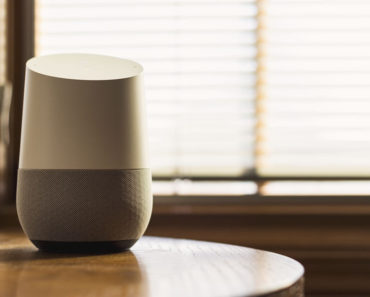“Smart” thermostats like the Nest Learning Thermostat offer convenient functionality, the opportunity to show off your latest gadget to your tech-loving friends, and the opportunity to save money on your utility bills.
The Nest Learning Thermostat, originally created by former Apple employees, is now owned by Google, and has been available for four years. The Nest website proclaims that it “programs itself, then pays for itself.”
But will the Nest actually save you enough money to be worth the cost?
The Purpose Of Smart Thermostats
Smart thermostats are technologically advanced digital thermostats that let you change the thermostat’s settings from the convenience of your smartphone. Some thermostats also allow you to do this from your computer, a web browser, or by voice, using a device with a virtual assistant app.
This is an incredibly convenient option, as you can walk in your door with an armload of groceries on a cold day and request by voice that the temperature be cranked up. By the time you’ve put the groceries away, your home will be toasty warm, without having to stop to mess with manual controls. On a hot day, you can use your smartphone to lower the temperature of your apartment so that it’s refreshingly chilly when you arrive home.
Smart thermostats may also allow you to check out your heating and cooling usage history and keep track of when and how much the system is being used (handy if you want to catch your teenagers in the act of boosting the air conditioning to arctic levels when you’re at work).
But the biggest and most-touted advantage of the Nest over the competition is that it will learn through your usage when you’re home or away, what your preferred temperatures are, and keep it within those ranges without you needing to lift a finger or even ask it to. As you adjust the temperature, the Nest learns your habits.
How This Saves You Money
At a price beginning at $99 to $250 for installation of the first thermostat and $25 to $50 for other additional thermostats installed in the same home or location, the Nest isn’t cheap. So how does this fancy thermostat really pay for itself?
By learning your habits and the temperatures you like to keep your home at during certain times of the day, the Nest can lower your air conditioning or heat levels while you’re away, reducing the amount of heating and cooling your house requires during those times.
Some might argue that you can accomplish the same thing by simply changing the temperature when you leave for work, and changing it back when you arrive home, without having to pay extra for a fancy thermostat. While this is true, it’s not uncommon to forget to change the temperature on your way out the door in the morning, which means your system will be running more than you want it to all day long, because you won’t be able to change it without going home to do it manually.
Also, if you have kids at home while you’re running errands or working, you’ll know by checking the usage history if they’re running the heat or air conditioning far above the levels that you want them at. You’ll also be able to figure out if they left doors and windows open while the air conditioning is running, because you’ll see a spike in how much it’s running, even while the temperature setting isn’t changed.
Savings Statistics
The Nest website states that heating and cooling costs make up approximately 50% of a typical household’s energy expenses. For an average U.S. household in the typical U.S. climate, you’ll save about $1,200 over the course of ten years by using the Nest Learning Thermostat, which works out to a total savings of 454% on your energy bills. It will take 2.6 years for Nest to “pay for itself” before you’d start seeing those savings, though.
If you think you might not be living in your house for at least 3 years or you don’t care about the convenience of being able to change your thermostat on the go or track your usage, then a Nest may not make economic sense for you.
But if you have children at home, or a spouse that likes to turn your home into a wintertime sauna when you’re not at home, or if you’re using a manual thermostat right now, the Nest could definitely save you money.
Another consideration is that the Nest also sends you a warning if something is amiss at home. So if the furnace breaks during a severe winter and puts your pipes at risk, you’ll get an alert right away. This could save you from the potential disaster that broken water pipes can create.
Supporting Data
Two studies have been done by two separate electric and gas utility companies in Indiana, and another study has been conducted in Oregon, comparing the Nest thermostat with the Honeywell TH211, a popular standard programmable thermostat, against a control “baseline” group of homes.
The results showed that the Nest had a 13% heating energy savings compared to baseline homes, and the Honeywell showed 8% and 5% savings over the baseline. The Nest also had a 16% and 14% cooling energy savings over the baseline homes, while the Honeywell showed a 15% and 13% savings over the baseline.
Conclusion - Does The Nest Thermostat Actually Save Money?
The amount of money the Nest could save you may depend on your home and your habits. If you tend to leave your thermostat set at the same approximate temperature all day long, the Nest may not save you very much money, and would only offer you the convenient features. However, while it may not save you in energy costs in such a circumstance, it could definitely prevent costly home repairs by warning you that your furnace quit during a severe cold snap.
But if you’re an energy-conscious person or looking to cut back on your energy bill, the Nest will definitely pay for itself over time, and will likely save you money as well.
Yet most users would acknowledge that the energy savings are merely one reason out of many that they chose the Nest thermostat. The ease and convenience of having a smart thermostat most often is the motivating factor for Nest buyers, because it makes their life easier and more comfortable.
So, Does The Nest Thermostat Actually Save Money? Yes!
Want to try for yourself?
If you’re interested in buying a Nest you can visit your local home improvement store or order from Amazon





